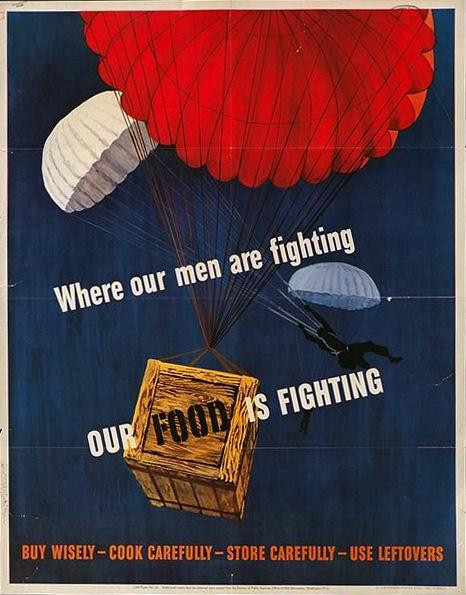When Men Were Men And Women Were Women
It's too bad today we have the woosie assed democratic leadership (say Pelosi, etc. al) who want to give away anything they can to make a vote with the liberal voters.

Did you know? In 1941, in an effort to control inflation, the U.S. Treasury began marketing the new Series E bonds U.S. Savings Bonds as "defense bonds". The government used the hype of the war to market the bonds to the country as a way to raise money for the war, when in fact they were used to remove money from the economy to control inflation. The first one was sold to President Franklin D. Roosevelt on May 1, 1941, by Secretary of the Treasury Henry Morgenthau.
After the formal entry of the United States into the war in December of that year, these bonds became known as "war bonds". These bonds were simply the latest offering of the U.S. Savings Bonds program that had begun in 1935, which replaced U.S. Postal Savings Bonds, and continues to this day. However, the mood of the nation at that time allowed the U.S. government to market Series E bonds as "war bonds", "war loans", "victory bonds", and by other names meant to appeal to a sense of patriotism.



Did you know? The Sullivans enlisted on January 3, 1942 with the stipulation that they serve together. The Navy had a policy of separating siblings, but this was not strictly enforced. George and Frank had served in the Navy before, but their brothers had not. All five were assigned to the light cruiser USS Juneau.
The Juneau participated in a number of naval engagements during the months-long Guadalcanal Campaign beginning in August 1942. Early in the morning of November 13, 1942, during the Naval Battle of Guadalcanal, the Juneau was struck by a Japanese torpedo and forced to withdraw. Later that day, as it was leaving the Solomon Islands' area for the Allied rear-area base at Espiritu Santo with other surviving US warships from battle, the Juneau was struck again, this time by a torpedo from Japanese submarine I-26. The torpedo likely hit the thinly-armored cruiser at or near the ammunition magazines and the ship exploded and quickly sank.
Captain Gilbert Hoover, skipper of the US cruiser Helena and commander of the US task force, was skeptical that anyone had survived the sinking of the Juneau and believed that his ships would be dangerously exposed as targets for the Japanese submarine if they attempted to look for survivors. Therefore, he ordered his ships to continue on towards Espiritu Santo. Helena radioed a nearby US B-17 bomber on patrol to notify Allied headquarters to send aircraft or ships to search for survivors.
Approximately 100 of Juneau's crew had survived and were left in the water. The B-17 bomber crew, unwilling to disobey orders not to break radio silence, did not pass the message about searching for survivors to their headquarters until they had landed several hours later. The crew's report of the location of possible survivors was mixed-in with other pending paperwork actions and went unnoticed for several days. It was not until days later that headquarters staff realized that a search had never been mounted and belatedly ordered aircraft to begin searching the area. In the meantime, Juneau's survivors, many of whom were seriously wounded, were exposed to the elements, hunger, thirst, and repeated shark attacks.
Eight days after the sinking, ten survivors were found by search aircraft and retrieved from the water. The survivors reported that Frank, Joe, and Matt died instantly, Al drowned the next day, and George survived for four or five days


Did you know? War bonds were debt securities issued by a government for the purpose of financing military operations during times of war. It is an emotional appeal to patriotic citizens to lend the government their money because these bonds offer a rate of return below the market rate.
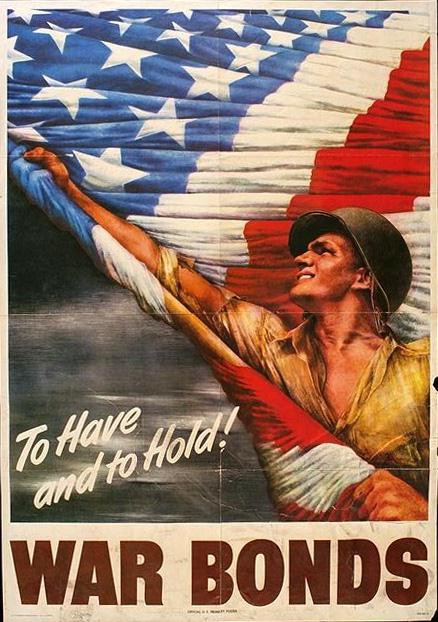

Did you know? The United States Army Air Corps (USAAC) was the predecessor of the U.S. Army Air Forces (USAAF) from 1926-41, which in turn was the forerunner of today's U.S. Air Force (USAF), established in 1947. Although abolished as an organization in 1941, it existed as a branch subordinate to the USAAF from 1941-47.
The Air Corps was created from the Air Service in 1926 largely as a compromise between advocates of a separate air arm and those of the command structure of the United States Army who viewed the aviation arm as an auxiliary branch to support the ground forces. Members worked to promote the concept of airpower between 1926 and 1941, but as a branch of the Army similar to the Signal Corps or Quartermaster Corps, its primary purpose within that period remained support of ground forces rather than independent operations. Today, the Army maintains an Aviation Branch as a subordinate element fulfilling some roles of ground force support, although it is unrelated to the original USAAC
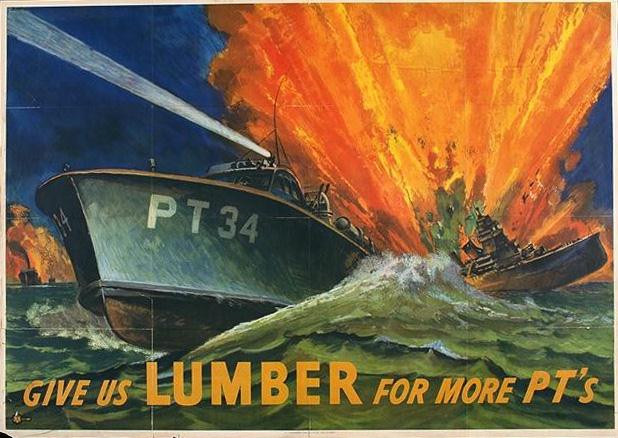
Did you know? PT Boats were a variety of motor torpedo boat (hull classification symbol "PT", for "Patrol Torpedo"), a small, fast vessel used by the United States Navy in World War II to attack larger surface ships. The PT boat squadrons were nicknamed "the mosquito fleet".
Torpedo boats, with displacement hulls, were first developed in the early 20th century as an inexpensive way to deliver torpedoes which could destroy ships as heavy as battleships without the massive weight necessary for large caliber guns. By WWII, the initial mission of the American PT boats was to battle destroyers, which themselves were originally created as a defense against torpedo boats. Indeed, the name "destroyer" is actually a shortening of the name "torpedo boat destroyer" from the World War One era. Though many would question the military effectiveness of the boats in this role, their psychological impact in deterring Japanese attacks was significant. The Navy's impetus for building the PT boat fleet was for both economic and material reasons. Ten PT boats could be built for the cost of one modest-sized destroyer escort. Another reason was a shortage of steel, which had to be conserved for building larger ships, at the beginning of the war. Towards the end of the war, the US was able to build a massive naval fleet, and the wood construction of the PT boats enabled more steel to be used for that purpose. Later in the war, the boats were much more effective as gunboats against targets their own size, such as armored barges that the Japanese used to shuttle troops and supplies between islands.
Among the famous PT boats was PT-109, commanded by future United States President John F. Kennedy, an Elco PT-103 class torpedo boat. Another was PT-41, a 77 foot Elco boat commanded by Lieutenant John D. Bulkeley, who rescued General Douglas MacArthur from certain capture by the Japanese in a daring escape from Corregidor Island, Philippines. Bulkeley was awarded the Medal of Honor for his operations in the Philippines before rescuing MacArthur. This story inspired both a book, They Were Expendable, and a movie of the same name. This story of the diminutive PT boats beating overwhelming odds went a long way to prop up sagging American morale in the dark days after the attack on Pearl Harbor.



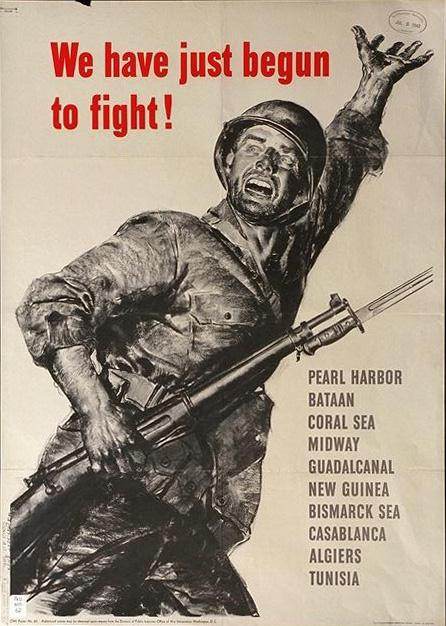
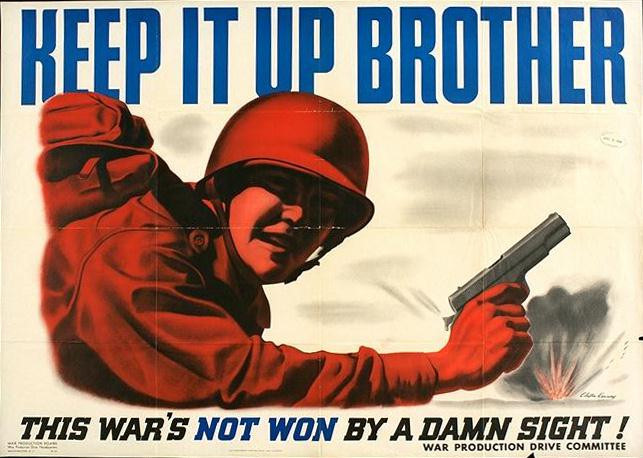

Did you know? The Bren (from Brno, the Czechoslovak city of design, and Enfield, the location of the British Royal Small Arms Factory), usually called the Bren Gun, was a series of light machine guns adopted by Britain in the 1930s and used in various roles until 1991. While it is best known for its role as the British and Commonwealth forces' primary infantry light machine gun (LMG) in World War II, it was also used in the Korean War and saw service throughout the later half of the 20th century including the Falklands War and the 1991 Gulf War.
The Bren was a modified version of a Czechoslovak-designed light machine gun, the ZB vz.26, which British Army officials had tested during a firearms service competition in the 1930s. The later Bren featured a distinctive curved box magazine, conical flash hider and quick change barrel. In the 1950s the Bren was rebarrelled to accept the 7.62x51mm NATO cartridge. Although fitted with a bipod, it could also be mounted on a tripod or vehicle-mounted.
The Bren was replaced as the section LMG by the L7 general purpose machine gun (GPMG), a heavier belt-fed weapon. This was in turn supplemented in the 1980s by the L86 Light Support Weapon firing the 5.56x45mm NATO round, leaving the Bren only in use on some vehicles.
As of November 2007, the Bren is still manufactured by Indian Ordnance Factories as the "Gun, Machine 7.62mm 1B".


Did you know? A dud is an ammunition round or explosive that fails to fire or detonate, respectively, on time or on command. Duds are still dangerous and have to be de-activated and disposed of carefully. Poorly designed devices (for example, IEDs), and small devices, have higher chances of being duds.
The variation absolute dud describes a nuclear weapon that fails to explode.
Although dud rounds have failed to function as designed, they are still dangerous, and can explode if handled. In war-torn areas, many curious children have been injured or killed from tampering with such devices. Dud fireworks should be destroyed by soaking in water. No attempts to re-light them should be made. People should keep away from dud ammunition and should call proper authorities who can safely handle and remove it.
By extension, "dud" has become a slang word for anything that doesn't work or is defective. There is also a candy called Milk Duds, named for the fact that it was impossible to get them perfectly round.
"Duds" has also become popular slang for clothing, as in "Hey Faris, nice duds!".


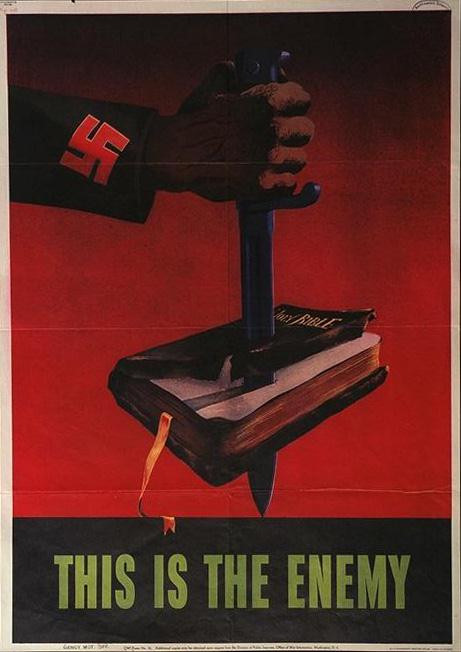

Did you know?
"Praise the Lord and Pass the Ammunition" is an American patriotic song written by Frank Loesser and published as sheet music in 1942 by Famous Music Corp. The song was a response to the Attack on Pearl Harbor that marked United States involvement in World War II.
According to the song, a chaplain ("sky pilot") was with some fighting men who were being attacked by an enemy. (Generally given at the time to be the Japanese at Pearl Harbor.) He was asked to say a prayer for the men who were engaged in firing at the on-coming Japanese planes. The chaplain, put down his Bible, manned one of the ship's gun turrets and began firing back, saying, "Praise the Lord and pass the ammunition". Now, however, there are facts available setting the story straight.
According to the writer, Jack S. McDowall, through the years the lyrics of the song have generally credited "a chaplain" manning the gun turrets of a ship, while under attack. "This was not true," says, McDowell.
For some time, long after the attack at Pearl Harbor, stories and reports continued to surface about the incident involving a chaplain who was to have uttered the now famous words "Praise the Lord and pass the ammunition".
These stories eventually made their way through the servicemen back to the press. The press, as McDowell noted, led some writers erroneously to identify other chaplains as authors of the phrase.
Nonetheless, the real chaplain, Howell Forgy, was aboard the USS New Orleans; during the Japanese attack. He was a Lieutenant (j.g.) on that Sunday morning in December, 1941.
Another Lieutenant who had been in charge of an ammunition line on the USS New Orleans during the attack remembered.
"I heard a voice behind me saying, Praise the Lord and pass the ammunition. I turned and saw Chaplain Forgy walking toward me along the line of men. He was patting the men on the back and making that remark to cheer them and keep them going. I know it helped me a lot, too", he said.
Another lieutenant j.g. said, the men aboard the USS New Orleans would thereafter kid Chaplain Forgy about the role he played whenever they heard the song that had been written. They also encouraged him to set the record straight as to who actually said what. According to that same lieutenant the chaplain would decline, saying he felt "the episode should remain a legend rather than be associated with any particular person". Author McDowell said that press reporters were eventually permitted to interview men of the USS New Orleans involved in the "ammunition" story. Chaplain Forgy's superior officers set up a meeting with some of the press and, at last, the real story of the song and the man who had inspired it was finally confirmed.
In 1942, a recording by The Merry Macs reached number 8 on the Billboard chart. The 1943 version by Kay Kyser and His Orchestra reached number 1.
Loesser donated his royalties for sale of the song to the Navy Relief Society.

